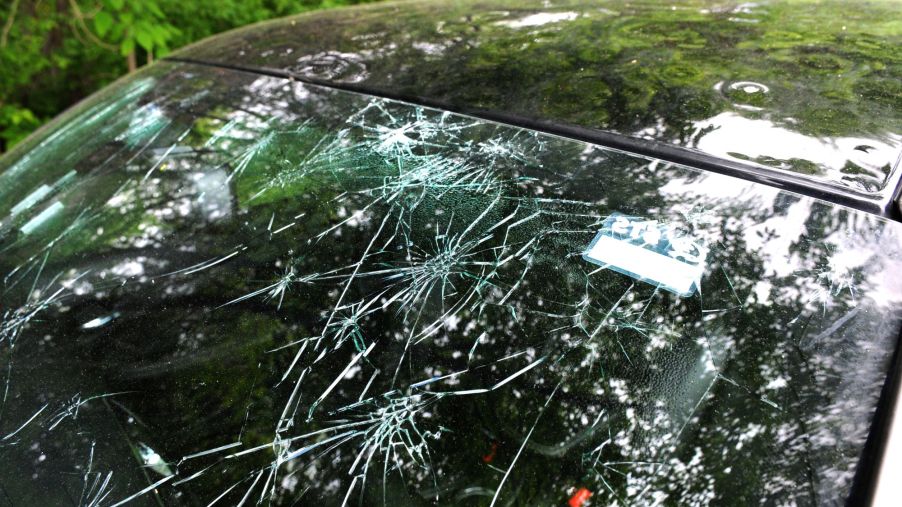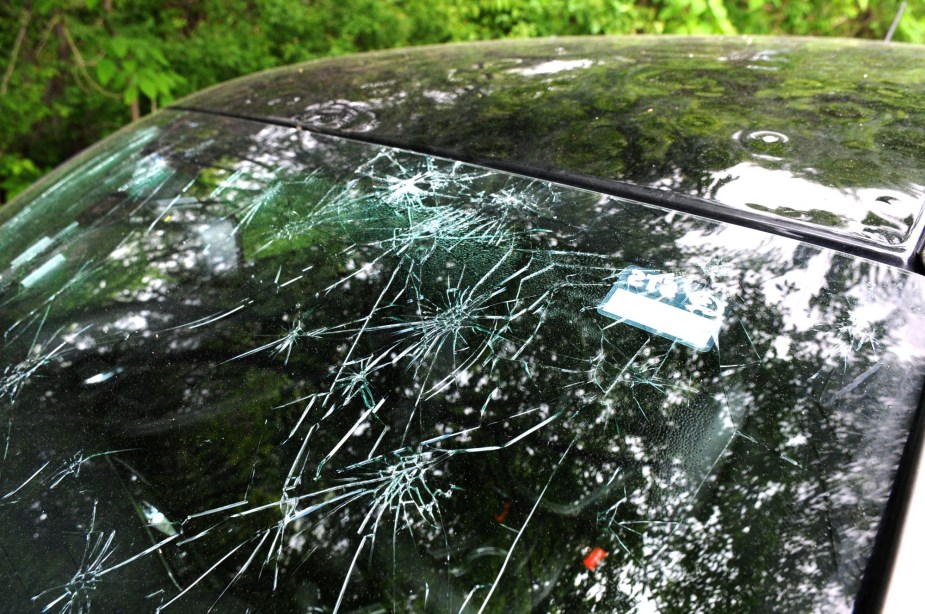
Will Insurance Pay to Fix Your Broken Windshield?
The vehicle’s wheel throws up a rock in front of you, and suddenly your windshield is chipped or cracked. Damaged windshields are a common complaint among car owners. It’s essential to understand why they happen and what you can do about them. Unfortunately, windshield repairs are among the ten common vehicle repairs you shouldn’t tackle yourself.
The many causes of broken windshields

iSeeCars reports that windshield repair or replacement is a frequent cause of automotive insurance claims. As they put it, “Drive long enough, and you will suffer a broken, pitted, or cracked windshield.” Road debris, including gravel or small stones, is one of the most common culprits for windshield damage. However, flying rocks or gravel aren’t the only things that can cause windshield damage.
Hail, falling tree branches, errant baseballs, flying ice chunks, pressure changes, vandalism, twisting caused by the improper use of a jack, poor installation, or an inherently defective windshield can also result in cracks or other damage.
Extreme temperature changes can also cause your windshield to crack. That’s because glass expands and contracts as the temperature changes. These cracks often occur around the perimeter of the windshield, where the temperature of the glass is apt to change more quickly than in the center. Whether from the defrosters or a hot and sunny day, that temperature differential is often enough to cause an unexpected crack.
Windshield damage can take the form of surface pits, bullseye chips, radiating starbursts, cracks, or any combination of these. A small chip can expand and even turn into a significant crack if nothing is done. You’ll want to take care of chips or cracks as quickly as possible.
Why you shouldn’t drive with a damaged windshield
Small pits or bullseyes smaller than a dime and outside your field of view don’t usually spread and shouldn’t interfere with your vision while driving. However, even small cracks tend to get larger and begin to obstruct your vision as they do. That’s why many cracked windshields won’t pass a vehicle inspection. It’s also why you could get a ticket for driving with a cracked windshield.
Sensors and other safety features built into your windshield may not work properly if the windshield is damaged. If you’ve come to rely on these safety features, you could be in for a nasty surprise when they don’t work like you’re expecting them to.
How to get your broken windshield fixed
It’s a good thing that most car insurance will pay to fix your broken windshield. Windshield repairs are cheaper than a replacement and will usually save money for you and your insurance company. Some companies will even pay for the repair at no out-of-pocket cost if you have comprehensive coverage on your vehicle. If you purchased a new vehicle from a dealer, see if they included a windshield and glass insurance policy with the sale. Many dealerships do.
You should immediately take photos when you notice damage to either your front or rear windshield. Place a small ruler next to the damage for scale and take closeups. Then take a wider shot showing which windshield is damaged. Now it’s time to contact your insurance agent to see what comes next. They may send an adjuster out to inspect the damage.
If your windshield has a lot of micro pits or scratches, it may be worthwhile to insist on a replacement rather than a repair. Those tiny pits and scratches will only increase with age and can cause a cloudy view under certain lighting conditions. The $400 or so that a new windshield will cost is very cost-effective when compared to the cost of an accident caused by obscured vision!


